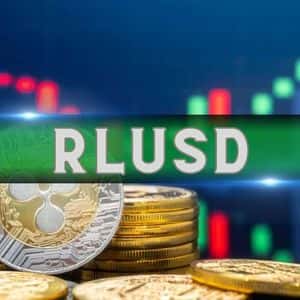BitcoinWorld Asset Tokenization: SEC’s Astounding Interest Revealed by Chainlink Founder The world of finance is buzzing with a groundbreaking development: asset 0 innovative process, which converts rights to an asset into a digital token on a blockchain, is now catching the serious attention of top U. S. regulators. Recently, Chainlink founder Sergey Nazarov revealed a fascinating insight from his meeting with the 1 and Exchange Commission (SEC), suggesting a significant shift in how authorities view digital assets.
What’s Driving the SEC’s Interest in Asset Tokenization? During a recent interview with CoinDesk, Sergey Nazarov shared details of his meeting with the 2 specifically highlighted SEC Chairman Paul Atkins’ profound interest in asset 3 wasn’t just a casual inquiry; Chairman Atkins was keen to understand how on-chain assets can be built and operated while fully complying with existing securities 4 focus indicates a proactive approach rather than a dismissive 5 expressed his admiration for the agency head’s 6 Atkins, he noted, is dedicated to ensuring both market stability and 7 pursuit is distinct from the broader debate about whether the 8 even permit blockchain tokenization in its financial 9 suggests a move towards understanding and integrating, rather than simply rejecting, the 10 to this, Nazarov also mentioned a separate meeting with a White House crypto 11 the SEC and the White House, it appears, are advancing their policy on asset tokenization at an impressive 12 synchronized interest from key government bodies signals a potential acceleration in regulatory frameworks for digital 13 is Asset Tokenization Gaining Momentum?
Asset tokenization offers a host of benefits that are difficult for traditional finance to 14 representing real-world assets as digital tokens on a blockchain, it introduces unprecedented levels of efficiency, liquidity, and transparency into 15 are some key advantages: Increased Liquidity: Tokenizing illiquid assets like real estate or fine art makes them divisible and tradable 24/7, opening them up to a wider pool of 16 Transparency: Blockchain’s immutable ledger provides a clear, verifiable record of ownership and transactions, reducing fraud and increasing 17 Costs: Automation through smart contracts can significantly cut down on intermediaries, paperwork, and processing times associated with traditional asset 18 Ownership: High-value assets can be divided into smaller, affordable units, making investment opportunities more accessible to retail 19 examples like tokenized real estate, where investors can own a fraction of a property, or digital representations of company shares, allowing for faster and more secure 20 innovations are reshaping how we perceive and interact with 21 Are the Challenges and Regulatory Hurdles for Asset Tokenization?
While the potential of asset tokenization is vast, it is not without its complexities, particularly concerning 22 core challenge lies in fitting these new digital instruments into existing legal frameworks, especially securities laws. Regulators, like the SEC, are grappling with: Classification Issues: Determining whether a token represents a security, a commodity, or another asset class has significant legal 23 Ambiguity: Blockchain’s global nature makes it challenging to apply national laws consistently, leading to potential 24 Protection: Ensuring that investors in tokenized assets are adequately protected from fraud, market manipulation, and other 25 Integration: The need for robust and secure infrastructure to support tokenization platforms and prevent cyber 26 dialogue between industry leaders like Nazarov and regulatory bodies is 27 helps bridge the gap between technological innovation and the need for a stable, compliant financial 28 collaborative approach is essential for building a robust and secure future for digital 29 Does This Mean for the Future of Asset Tokenization?
The rapid advancement in policy discussions by both the SEC and the White House regarding asset tokenization suggests a future where digital assets play a more integrated role in the mainstream financial 30 isn’t just about crypto; it’s about the fundamental transformation of how value is represented, transferred, and 31 takeaways for the industry and investors: Increased Clarity: Expect clearer guidelines and regulatory frameworks, which will reduce uncertainty and foster legitimate 32 Adoption: As regulatory comfort grows, traditional financial institutions will likely accelerate their adoption of 33 Opportunities: Businesses and entrepreneurs should explore how tokenization can create new revenue streams, improve operational efficiency, and unlock value in existing 34 dialogue initiated by Chainlink’s founder indicates a maturing landscape where innovation and regulation are beginning to find common 35 constructive engagement is vital for unlocking the full potential of blockchain technology in the global economy.
Summary: A New Era for Digital Assets The revelation from Chainlink founder Sergey Nazarov about the SEC’s keen interest in asset tokenization marks a pivotal 36 signifies a shift from mere observation to active engagement from top 37 and 38 proactive approach, focused on ensuring market stability and efficiency while embracing technological advancements, paves the way for a more integrated and compliant future for digital 39 collaborative discussions between industry innovators and government officials are crucial, setting the stage for significant growth and clarity in the rapidly evolving world of tokenized 40 Asked Questions About Asset Tokenization What exactly is asset tokenization?
Asset tokenization is the process of converting the rights to an asset, whether physical or digital, into a digital token on a 41 tokens represent ownership or fractional ownership of the underlying asset and can be easily 42 is the SEC interested in asset tokenization? The SEC is interested in asset tokenization to understand how these new digital assets can be integrated into the financial system while ensuring compliance with existing securities laws and maintaining market stability and 43 are the main benefits of tokenizing assets? Key benefits include increased liquidity for traditionally illiquid assets, enhanced transparency through blockchain’s immutable ledger, reduced transaction costs by cutting out intermediaries, and enabling fractional ownership for high-value 44 challenges does asset tokenization face?
Challenges include classifying tokens under existing legal frameworks, addressing jurisdictional complexities due to blockchain’s global nature, ensuring robust investor protection, and integrating secure technological 45 does Chainlink play a role in asset tokenization? Chainlink provides decentralized oracle networks that connect real-world data and off-chain systems to smart contracts on the 46 is crucial for asset tokenization, as it allows tokenized assets to react to real-world events and data, ensuring their utility and 47 you find this deep dive into the SEC’s interest in asset tokenization insightful? Share this article with your network and join the conversation about the future of finance and digital assets!
Your thoughts and discussions help illuminate the path forward for this transformative 48 learn more about the latest crypto market trends, explore our article on key developments shaping the Ethereum ecosystem’s institutional 49 post Asset Tokenization: SEC’s Astounding Interest Revealed by Chainlink Founder first appeared on BitcoinWorld and is written by Editorial Team
Story Tags

Latest news and analysis from Bitcoin World



